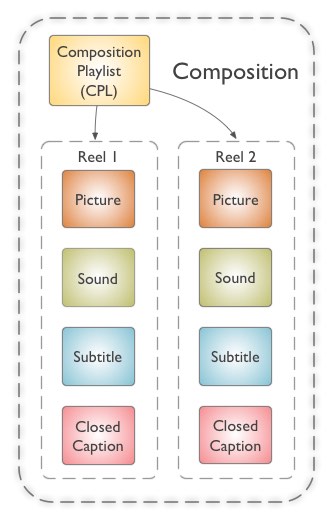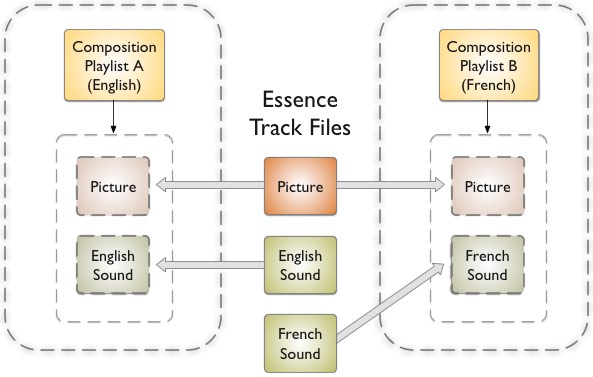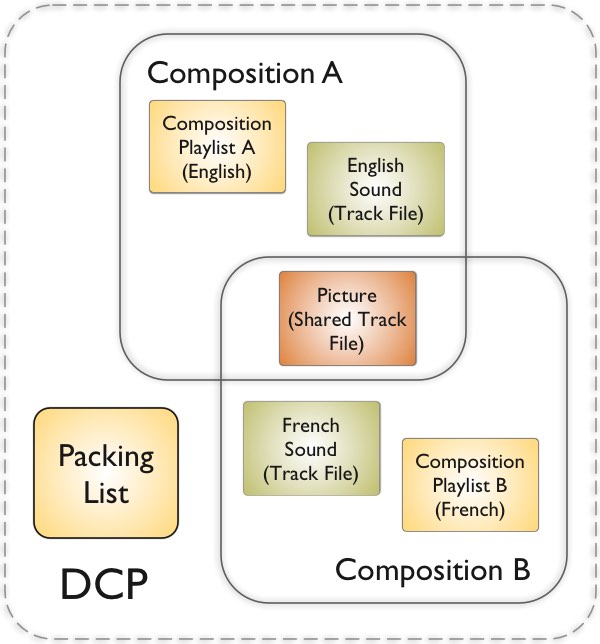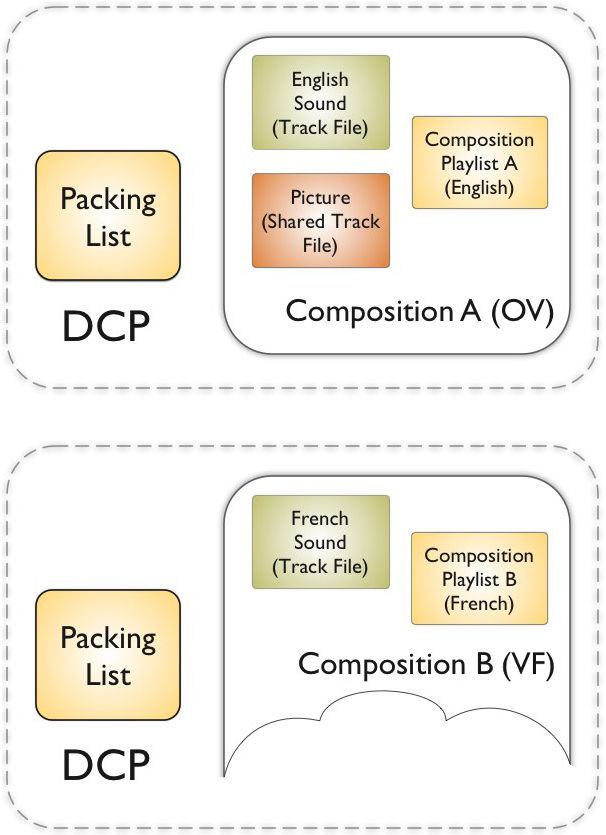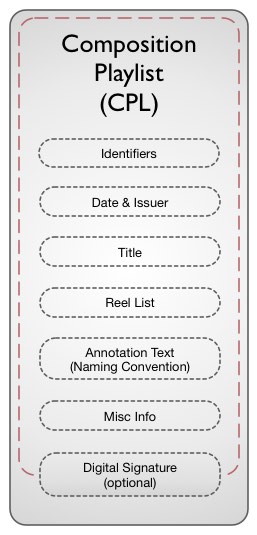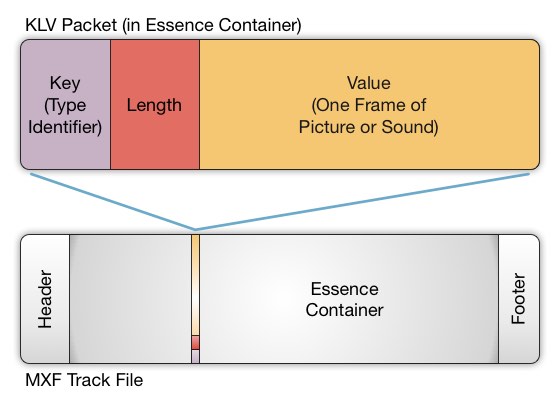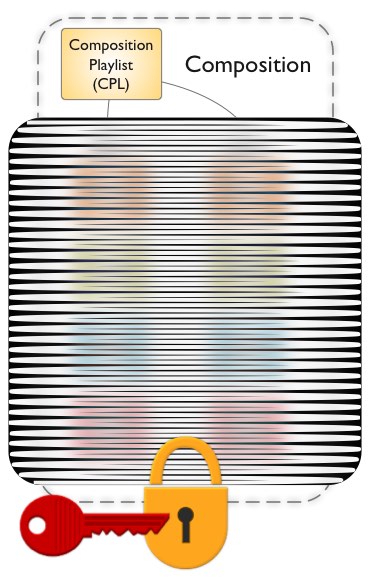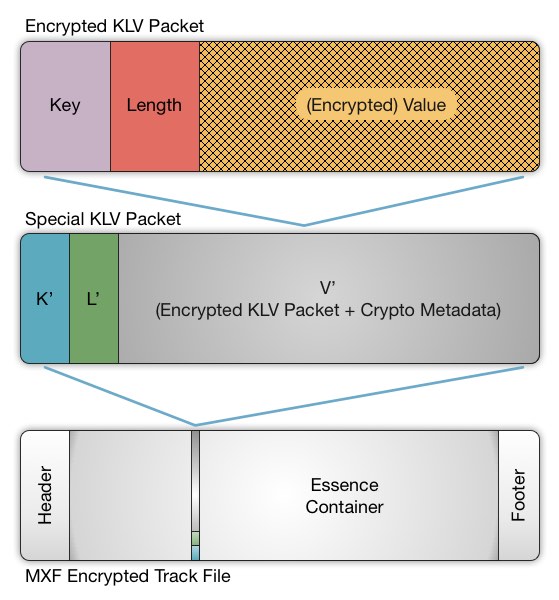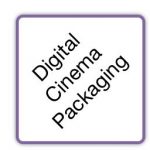
In the language of digital cinema, a Digital Cinema Package, or DCP, is the name given to the collection of files sent to a cinema. It is a “packing crate” for files, which may or may not comprise a complete motion picture. A digital motion picture, on the other hand, is comprised of a structured set of files referred to as a Composition. A Composition is a work product, or title, examples of which include not only motion pictures, but also trailers and advertisements.
A DCP can carry one or more Compositions, or only a partial Composition. When carrying one or more Compositions, the DCP is called a Composition Package. When carrying the partial assets of a single Composition, the DCP is called an Asset Package. A Packing List accompanies each DCP, identifying the DCP’s file assets. These concepts are illustrated below, and explained in further detail in subsequent parts of this chapter.
Importantly, the DCP and Composition concepts are not patented. For interoperability, multiple SMPTE standards define the structure of the components. Further, multiple software providers offer DCP creation products, some of which are based on open source software.
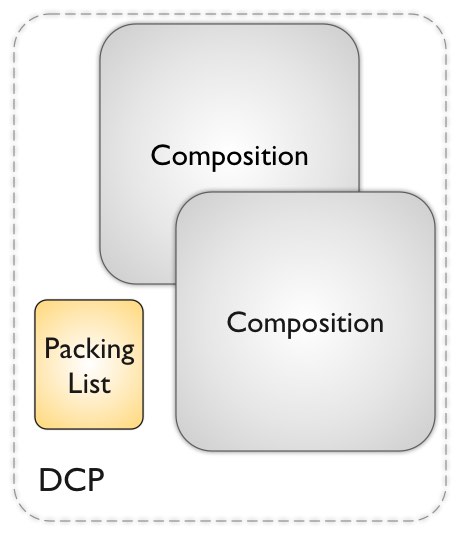
Figure DCP-1. A Digital Cinema Package (DCP) as a Composition Package
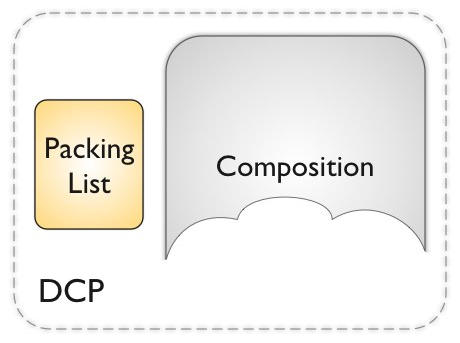
Figure DCP-2. A Digital Cinema Package (DCP) as an Asset Package
